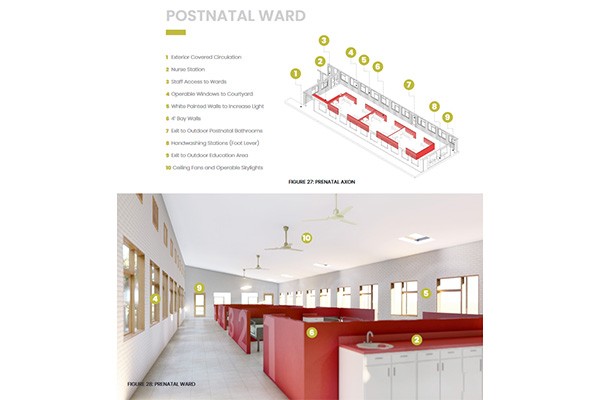While medical studies show that maternal mortality is best addressed through improved clinical practice, very little research exists regarding maternal mortality improvement through architecture. The aim of this study was to comparatively access existing maternity wards in health centers, district hospitals, and central hospitals with regards to quality of care, staff efficiency and infection control. In addition, we reviewed medical research, evaluated exemplary case studies, analyzed large and small-scale ward typologies, and performed interviews with health professionals and students. The main problem being framed is the deficiency of adequate maternity wards for expecting mothers in both rural and urban contexts. The closer study of current ward conditions in all healthcare infrastructures will open doors to new opportunities for design solutions that address quality of care, staff efficiency, and infection control. Resulting design solutions do not address cost, materials, delivery, construction, and expansion.
Students, faculty involved:
Student: Enya Barquia, Adam Hoover, Katelyn High
Faculty: Chris Harnish





